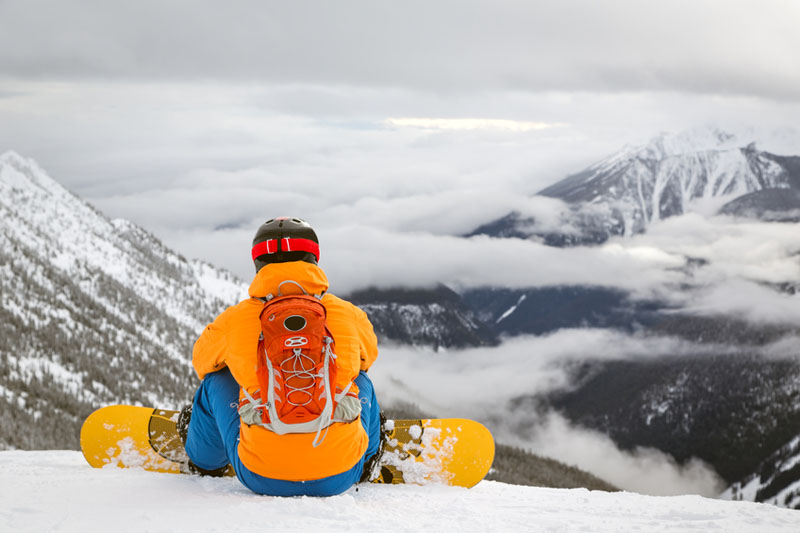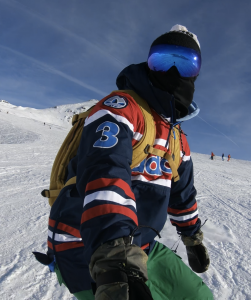
5 Tips for A Boarder
As you know, I’m an avid boarder myself. So, I thought why not put together my top 5 tips for anybody looking to get into boarding, or for someone who wants to go boarding who hasn’t been in a while. Here we go!
Where to Go?
Some of the best snowboarding resorts available are based in Snowbird (Utah, USA), Telluride (Colorado, USA), and Cervinia (Italy) (not forgetting my beloved Whistler, too)!
In Little Cottonwood Canyon, Snowbird offers lots of diverse terrains that are easily accessible. It is ideal for boarding and skiing, with 4,700 acres of slopes, the most vertical terrain in Utah, and incredibly light snow. It boasts an impressive annual snowfall of 1,270 cm. Only two years ago, they had over 2 m of light dry Utah powder. Snowboarders should experience Snowbird’s Mach Schnell off the Snowbird tram for some awesome fall-line riding. It has 45-degree steps through its bowls and open glades. Another feature of Snowbird is that departing from Plaza Deck, they offer complimentary tours of the mountain every morning from 9.30 am until 10.30 am. It is a good idea for a snowboarder to become familiar with their environment before attempting any tricks.
Telluride offers slopes that are quiet and without queues and sufficient terrain that is suitable for beginners. It regularly attends to its runs, which are wide and gentle at even the highest peaks. Its Trails are marked for beginners. Challenging terrain can be experienced, too, with 41 per cent of the trails designed for advanced or expert snowboarders. The challenging Black Diamond Run called “The Plunge” represents one of its steeper lines to ride.
Cervinia is another resort where plenty of trails exists for beginners. There is also the magnificent view of Matterhorn to experience while snowboarding. The resort caters for intermediates and freestylers, too.
The Conditions – Powder or Ice?
When learning, it is a good idea not to ride in hard or icy conditions. This can be controlled by the time of year and the time of day that you go snowboarding. For instance, when spring conditions have arrived, the snow will melt in the afternoon, yet refreeze at night and for the morning. So, if you delay your snowboarding until the afternoon, the snow will have partially melted and therefore be softer to ride on. It is always better to visit a mountain when there has been fresh snow, as opposed to the middle of winter when there might not have been any new snow for several weeks.
The advantage of finding soft snow, often termed powder by snowboarders, is that it allows you to make weightless curves as if you were surfing on water. In other words, you have much more manoeuvrability and control in softer conditions. So, it makes sense to seek them out. Also, you can’t beat shredding thick powder once you’ve become more comfortable on a board!
Protective Gear
Wearing protective gear does not just keep you safe, it gives you the confidence to learn new tricks and faster because you know that, should a move not go quite to plan, you are protected from the fall. First off, look for the best snowboard helmet brands so that you can purchase a sturdy and durable helmet, the safety and warmth of which you can be sure of. Then, protective gear should also include wrist guards and knee pads. Wrist guards are specifically designed to prevent snowboarders from getting gravel in their hands when falling forwards into hands and knees. Knee pads are worn for all sorts of sports to protect knees from impact injuries such as hitting obstacles or falling to the ground. The amount of padding that they contain is all-important for protection. So while you’re at it, make sure you learn as much as you can about what you should bring for snowboarding whistler, or Cervinia when planning for a trip to the backcountry, because preparation is the key to making the most of it!
Best Snowboards for Beginners
A soft flex (1-2 out of 10), or medium flex (3-4 out of 10) are best when looking for a snowboard as a beginner. 1 is softest and 10 is stiffest. Don’t worry about buying an expensive board to begin with, as you’ll likely find you don’t actually like the ride of most beginner boards. I didn’t spend big bucks until I bought my current T Rice Pro!
Best Tricks
When getting started, Ollies are a good foundation for lots of aerial stunts. Initially, Ollies are performed off the ground, but the techniques learned will later be able to be applied to jumping small obstacles and for achieving extra air off jumps. Other moves which are ideal for snowboarding beginners include Manuals, Butters, and Ground 180s.
An Ollie is performed by pushing the snowboard forward, sliding it beneath you, and then balancing your hips above the tail of the board. At this position, the board will be bending and lifting off the ground in what is termed a tail press position. The snowboarder then uses this press to pop up off the tail and into the air, aiming to land evenly on both feet.
A Manual is also known as a wheelie and is where the snowboarder lifts the nose of their snowboard and rides on just the tail of it or lifts the tail and rides just on the nose. It is considered one of the easier moves but does require some balance and practise. Butters are a step up from Manuals. The next progression is Ground 180s.
The hardest snowboarding trick to learn is the Quad Cork 1800. This was first landed by British Olympian Billy Morgan. The trick entails catapulting off a ramp and straight into four off-axis flips (which are called corks) and then doing five full spins. Apparently, this 1,800-degree stunt has only ever been completed by four people. So, this is something to strive for.
These are my top 5 tips for boarding. As you know, I love boarding and think everybody should have a go. Even if you don’t like it, at least you tried, but I’d be very surprised if you don’t love it!
